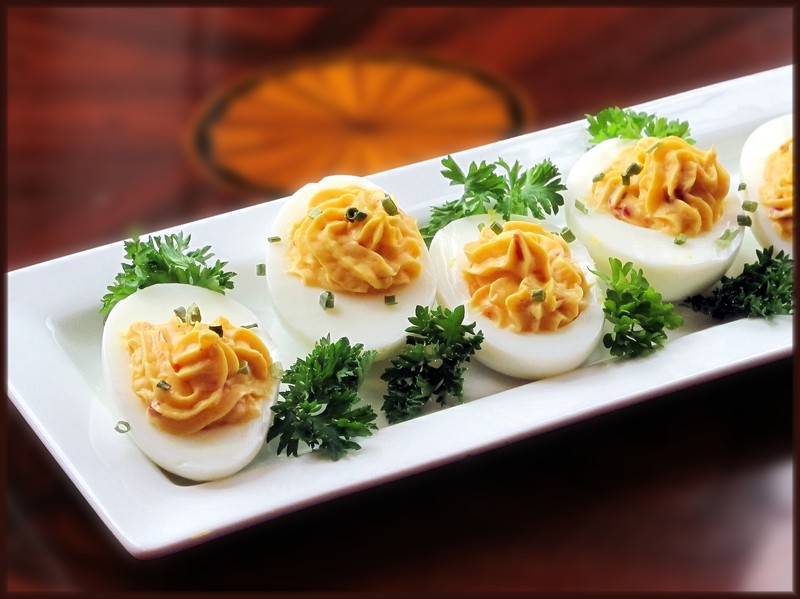Why eggs? From the roasted egg on the Seder plate to the decorated eggs left behind (or hidden) by a rabbit, eggs appear in a variety of springtime celebrations. From a cultural standpoint, eggs have long been associated with fertility and rebirth - timely connections to the season when warmer weather arrives and farmers begin to sow their fields.
For the Jewish Passover ritual, the roasted egg symbolizes sacrifice and mourning over the destruction of the Temple in Jerusalem. A modern twist from a witty rabbi is the notion that the more an egg is boiled or burned, the tougher it becomes, just as do the Jewish faithful. In the Christian church, the egg symbolizes immortality: The resurrection of Christ from a sealed tomb is not unlike the bird breaking from its shell.
Evidence of the practice of engraving eggshells dates as far back as 60,000 years in Africa, and examples of decorated eggs can be found in Egyptian tombs. Early Christians in the Middle East adopted the practice of dyeing eggs red at Easter time to commemorate Christ’s crucifixion. A prayer written in 1610 by Pope Paul V formally embraced the custom.
Originally, the contents of the eggshell were blown out through a small hole, leaving behind a canvas for decorating. This was replaced by hard-boiling the eggs that accumulated during Lent, the period before Easter. While the rule for fasting from dairy foods prohibited eating eggs, the chickens didn’t stop producing their daily supply. To keep the eggs and ensure they’d be edible at Easter, they were cooked and stored until they were decorated for the holiday.
When did we start eating eggs? Most food historians agree that humans have been eating eggs for as long as we’ve been around. Birds were a reliable source of eggs: once the nest eggs were removed, the bird would lay more. From wild game birds to domesticated fowl, eggs of every size and color have been a source of quality protein.
|
WHAT TO DO WITH HARD-BOILED EGGS? |
As an integral part of commercial egg production, the USDA has established sizing guidelines for packaged eggs. The cartons marked “Medium,” “Large,” “Extra-Large” or “Jumbo” don’t reflect the size of each individual egg, but the average weight of the entire dozen. For example, a package of 12 large eggs will weigh about 24 ounces, but not every egg will weigh two ounces; some will be heavier and others lighter.
Not everyone agrees with eating eggs. In some tribal cultures, taking an egg from a nest is considered stealing; inside the egg is another bird that could add to the flock. There are also people (vegans) who will not eat anything of animal origin and those who object to the mechanics of the egg-processing industry.
For those of you who enjoy eating eggs or who plan to hard boil eggs to decorate, try the deviled eggs in the photo. As you can imagine, there are countless ways to add heat and spice to egg yolks, the easiest of which is to stir in sriracha sauce (also known as rooster sauce for the emblem on the label or chili garlic sauce for the main ingredients).
To reduce the fat and calories in a batch of deviled eggs, don’t use all the yolks, and replace some of the mayo with thick Greek yogurt. If you’d like to experiment beyond this recipe, other mix-ins for the fillings in deviled eggs include garlic powder, Worcestershire sauce and sweet or dill relish. Toppings include sliced olives, crumbled bacon and snipped sun-dried tomatoes. Hope you find all the eggs the bunny hides!
Deviled Eggs
6 hard-boiled eggs
1/4 C light mayonnaise
1/4 C plain Greek yogurt
1 t Dijon mustard
1 t Sriracha sauce
salt & pepper, to taste
snipped chives or paprika
Peel and halve the eggs lengthwise. Scoop out five of the yolks into a mixing bowl; discard the rest or mix them into tuna salad. Arrange the egg white halves on a serving dish, cut side up. Mash the yolks with a fork until no lumps remain. Stir in yogurt and mayo, whisking until smooth. Mix in mustard, Sriracha and adjust seasonings to taste. Spoon the yolk mixture into a pastry bag with a wide star tip. Pipe the yolk into the whites in a decorative fashion. Garnish with snipped chives or paprika.





















































